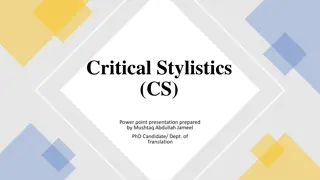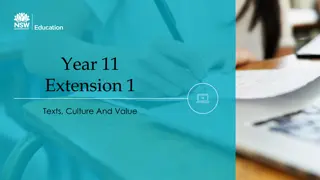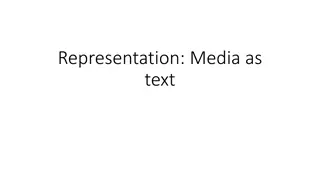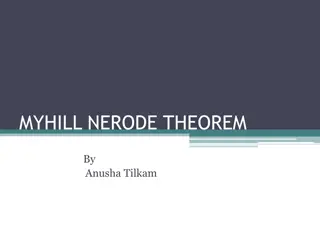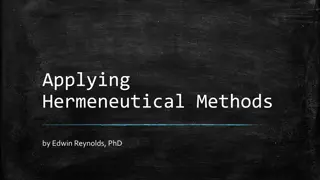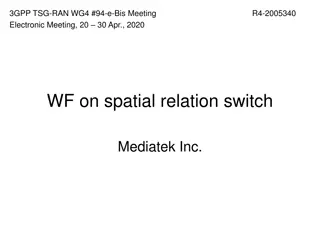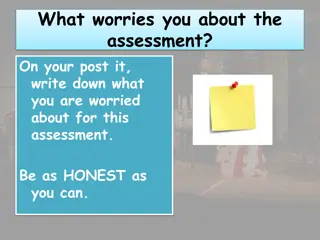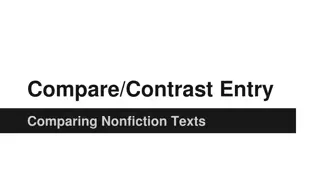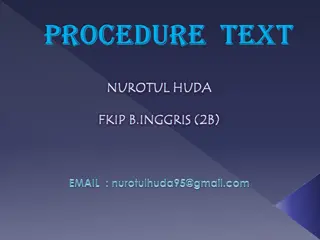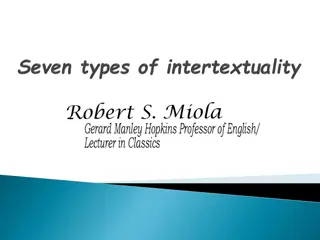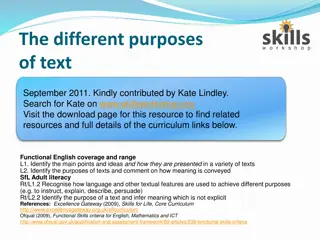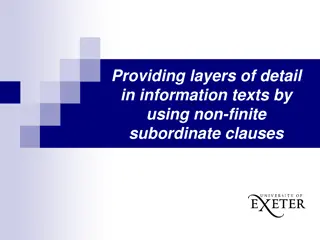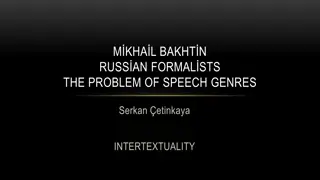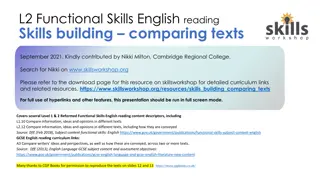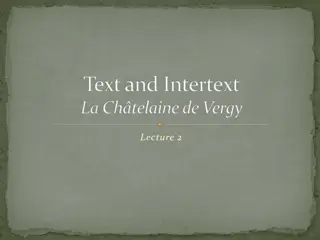"Intertextuality Relation Among Texts: Examples and Types"
Expanding upon the concept of intertextuality, the text explores the three kinds – explicit, implicit, and symptomatic. Using T.S. Eliot's "The Waste Land" as a focal point, the content delves into how various references such as The Golden Bough and Wagner establish intertextual connections. By examining these intertextual relationships, readers gain insight into the intricate web of connections that exist among different texts, enriching the understanding of literature's interconnectedness.
Download Presentation

Please find below an Image/Link to download the presentation.
The content on the website is provided AS IS for your information and personal use only. It may not be sold, licensed, or shared on other websites without obtaining consent from the author.If you encounter any issues during the download, it is possible that the publisher has removed the file from their server.
You are allowed to download the files provided on this website for personal or commercial use, subject to the condition that they are used lawfully. All files are the property of their respective owners.
The content on the website is provided AS IS for your information and personal use only. It may not be sold, licensed, or shared on other websites without obtaining consent from the author.
E N D
Presentation Transcript
intertextuality -- between-texts - relation between one text and another three kinds: explicit intertextuality: overtly referred to. T.S. Eliot's The Waste Land notes referring to The Golden Bough, Wagner etc. implied intertextuality passing allusions to other texts, ironic, satiric to be picked up by alert reader Chaucer: Aprille with his shoures soote (sweet) First line of The Waste Land: April is the cruelest month Orwell: It was a bright cold day in April, and the clocks were striking thirteen. inferred intertextuality: texts that readers draw on to understand the text in hand not in the writer's mind, or existed at the time compare The Waste Land to cubist art po-mo, tv adverts, pop vidoes process of weaving, rather than finished web
Grard Genette -- transtexuality Intertextuality : quotations Paratextuality: relation of main text to that which surrounds it: titles, prefaces, etc. Architextuality: relation of text to the genre to which it belongs. Metatextuality : the manner in which a text, implicitly or explicitly, comments on another text. Hypotextuality/hypertextuality : relation of a text with its preceeding hypotext. Seen in adaptations, parody, sequels, etc.
Mikhail Bakhtin, The Dialogic Imagination These distinctive links and interrelationships between utterances and languages, this movement of the theme through different languages and speech types, its dispersion into the rivulets and droplets of social heteroglossia, its dialogization -- this is the basic distinguishing feature of the stylistics of the novel.
The I which approaches the text is itself already a plurality of other texts, of infinite, or more precisely, lost codes (whose origins are lost) ... Subjectivity is generally thought of as a plentitude with which I encumber the text, but in fact this faked plentitude is only the wash of all the codes which make up the I, so that finally, my subjectivity has the generality of stereotypes. - Roland Barthes, S/Z
every text takes shape as a mosaic of citations, every text is the absorption and transformation of other texts. The notion of intertextuality comes to take the place of the notion of intersubjectivity. - Julia Kristeva, Semiotics



